
It is also interesting that keris culture prevailed even after the advent of Islam in the Malay world. In the span of 5 centuries, Islam gradually became a major religion in the region. After the decline of ancient kingdoms, keris produced in the newly-formed sultanates were subject to the Islamic obligation, where pre-Islamic elements were replaced or over-ridden by floral motifs, calligraphy and symbolic abstractions.
This is apparent to a keris once owned by an Alim (Muslim scholar), Tok Ku Isa from Kuala Berang, Terengganu based on the inscribed blade. Tok Ku (Terengganu dialect for Tok Engku) was a honorary title reserved for the Sayyid family in Terengganu whose descent could be traced to Hadhramaut, Yemen. The variant spelling of Terengganu, inscribed as ‘Terkanu’ on the blade signifies the owner’s Arab roots, as that is how the state is spelled in Arabic. The design and motifs show no trace of pre-Islamic elements at all, befitting a keris for the pious.